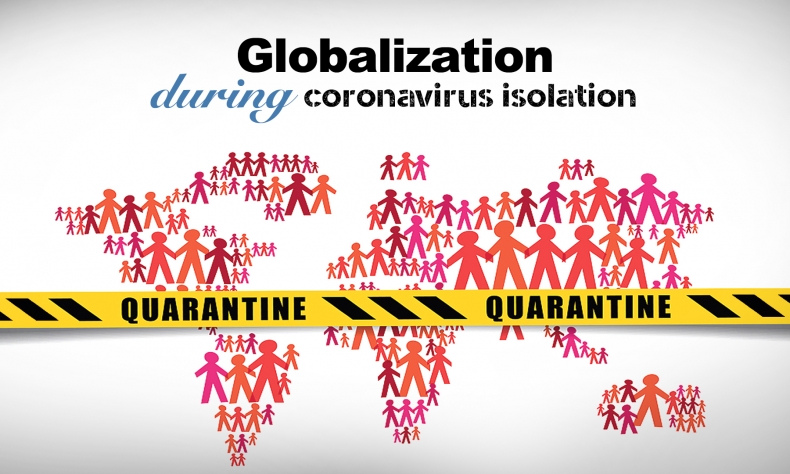Globalization May Slow But Will Never Stop

The outbreak of the pandemic severely thwarted the close interdependence that existed among all economies. And it has had a significant impact on the world economy.
After communicating with people in business circles recently, I found that, aside from economic recovery, their biggest concern was whether the COVID-19 pandemic would become a turning point in globalization. In other words, will the world go down the path of “deglobalization”? Will the major economies move toward isolation instead of openness, or will they tend toward separation as opposed to cooperation? Will they tend to rebuild the whole industrial chain behind closed doors?
In my opinion, the COVID-19 pandemic does pose a serious challenge to globalization. On the one hand, the outbreak of the pandemic is to some extent a force of “anti-globalization”; on the other, some major economies began to pay attention to the so-called industrial “weak link” created by the shortage of medical supplies used in pandemic prevention and control.
The outbreak of the pandemic severely thwarted the close interdependence that existed among all economies. And it has had a significant impact on the world economy.

I have noticed that some countries, including the U.S., have self-examined a lot since the outbreak of the pandemic. Some American experts expect to be bypassing China in the future, as they are worrying about the over-dependence on medical supplies made in China. Another example is that the automobile industry, which relies on a global sales network and parts procurement worldwide, has been severely affected by the pandemic; thus, some experts have advised building the whole industrial chain in their own countries.
These events reflect the rise of protectionism and populism in the wake of the COVID-19 pandemic. As a result of the above-mentioned aspects and the impact of the pandemic, the global economy will enter a recession, and even the interruption and reconstruction of supply chains may occur.
However, the COVID-19 pandemic is a global crisis but not a crisis in terms of globalization. Globalization will surely adjust and slow down, and investment and trade may regress back to the stage of “limited globalization.” In my view, no one major economy is an isolated island; every major economy is part of the industrial chain, supply chain and value chain. Under the background of the rapid development of new infrastructure, such as a new generation of information technology and artificial intelligence, globalization is more in line with the needs of comparative advantages, industrial division, and the optimal allocation of resources.

Therefore, “beggar-thy-neighbor” policy comes to a dead end. Only cooperation can bring common interests. If the U.S. plans to reshape its industrial chain, only relying on raising trade barriers and punitive tariffs cannot work. Two simple questions arise: Would American people like to pay $25 to buy a pair of socks? Would they like to pay more than $2,000 for an iPhone? For American people buying socks of the same quality that are made in China at a lower price, or using an iPhone assembled from various parts produced in China — and for American enterprises gaining huge profits from the Chinese market — this is thanks to the industrial chain and supply chain in China. China’s industrial chain and supply chain have formed over a long period of time, and they are the results of domestic integrated factors, including a series of policies and supporting measures of both central and local governments, the government’s large investment in infrastructure, the special role played by the advantages of the system and efficient workers. China’s ability to provide an industrial chain and supply chain to serve the world economy has accumulated in the past four decades, which cannot be accomplished overnight.
Then, what should China do? China’s modernization process has benefited from globalization, and its future development still depends on globalization. First, we need to advance reform and opening-up to a higher level and continue to optimize business environments. Second, we need to make great efforts to expand domestic demand, in turn increasing people’s willingness and ability to consume. In my point of view, the most important and lasting measure to expand domestic demand is to increase the income of the middle-income group. In the next 10 to 15 years, the number of middle-income citizens in the country should be doubled. Third, we need to adjust the layout of the industrial chain and supply chain, and we need to speed up the digital upgrade. The export-oriented industrial chain should integrate with the new generation of information technology, such as digital transformation, core technology innovation, and business model innovation. Enterprises should actively adapt to the upgrading of both industry and consumption and satisfy consumers’ expectations when it comes to products and service innovations.
Since the added value of China’s manufacturing industry surpassed that of the U.S. in 2010, the size and integrity of China’s industrial chain and supply chain have been leading the world. At present, the added value of China’s manufacturing industry accounts for around 30% of the total value in the world — almost the sum of that of the U.S., Japan and Germany. Thinking about the industrial chain, supply chain and value chain from a global perspective, we must remain prudent and alert and give play to our differentiated competitive advantages in infrastructure, supporting efficiency, business environments, investment in human capital and tax and fee reduction.
We must uphold the bottom-line thinking, maintain focus, follow the trend, take precise measures, and rely on ourselves to promote development. Depending on a huge market of 1.4 billion population, the world-leading supply chain, and a digital economic platform, China’s industrial chain still contains huge development space and innovation opportunities. These give us the confidence needed to play our important role in the process of globalization.
The author is a member of the Standing Committee of the CPPCC National Committee and an economic, accounting and auditing expert.
The article was first published in Chinese and translated by Lin Liyao.
 Facebook
Facebook
 Twitter
Twitter
 Linkedin
Linkedin
 Google +
Google +










